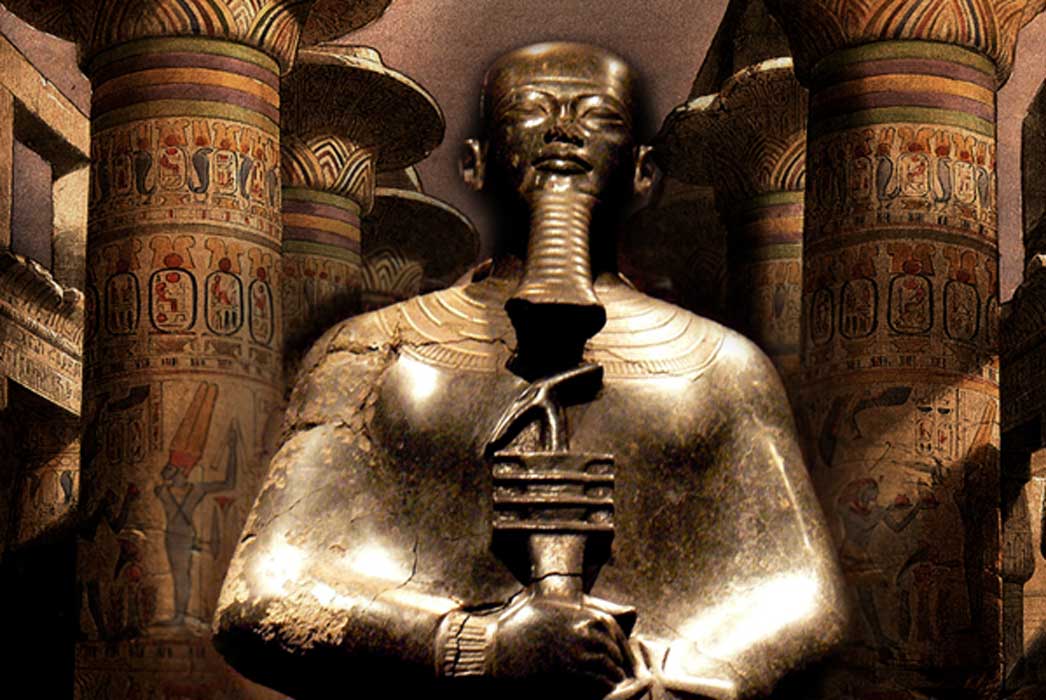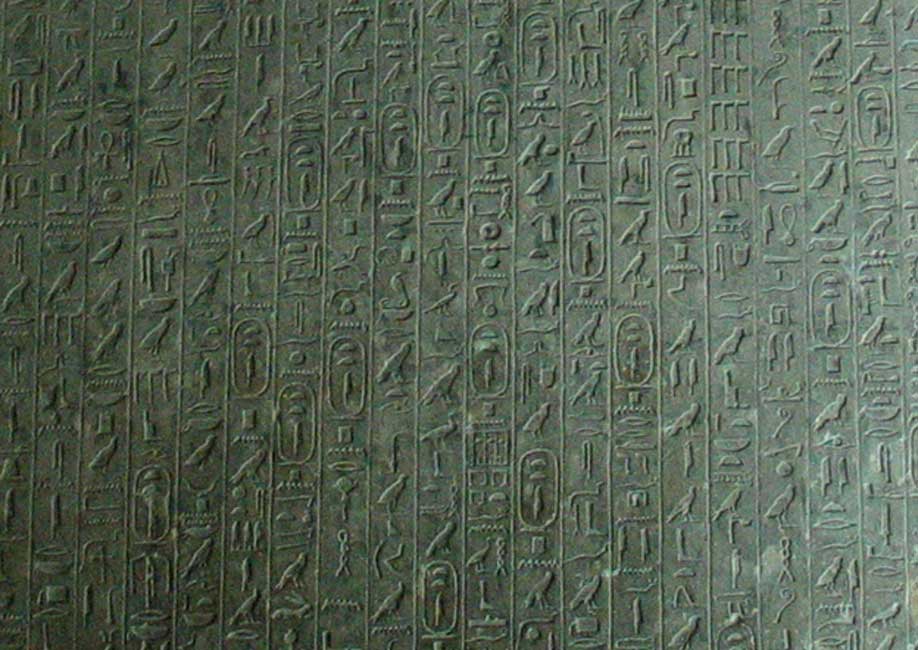
The Enigmatic Columns of Horus: Hidden Tools, Weapons of the Gods? – Part I
Over the last two centuries, Egyptologists have proposed a host of certainties on Egyptian burial customs with the study of abundant literature found within the tombs, built during the Ancient and Middle Reign. The so-called Pyramid Texts, for instance, provide an extremely valuable source for the reconstruction of ancient rituals made during the burial phases. Analyzing the quantity of findings, scholars discovered that a pharaoh’s relatives – and also his priests – elevated many prayers to the gods, in order to judge his soul lovingly and then to usher him to the cosmic region of Duat.

Pyramid text in Teti pyramid in Saqqara, Egypt. (Public Domain)
Studying paintings in the ancient tombs, we can assume that the gods of Ennead of Heliopolis—the group of nine deities worshipped in Ancient Egypt (and to which must be added Anubis, Thoth and Horus) – played an important role, supervising the rituals.

Deities each played a vital role in the lives and afterlives of Ancient Egyptians. Relief in Temple of Dendera, Egypt. (CC BY-SA 3.0)
Each of them had specific functions: from mummification, to the weighing of the Heart, from the opening of the mouth, to the Final Judgment, until the deceased's closing stages to the afterlife.
The Followers of Seth, Friends of Osiris
The Pyramid Texts are extraordinary in quality and quantity, just like the famous Egyptian Book of Dead. One of the most useful translations was by the archaeologist Ernest Alfred Wallis Budge, in 1895, considered a pillar of Egyptology.
Equally important, is a newer translation by the Italian archaeologist Boris de Rachewiltz, in 1958. He made a number of changes, proposing some very surprising contents and unveiling some anomalies concerning the pre-dynastic age. One of the most interesting verses focused on hidden tools that were the seeds of the dispute among “the followers of Seth” and “the friends of Osiris”: the so-called Columns of Horus. To attain those mysterious tools, The Followers of Seth apparently tried to conquer the holy town of Heliopolis, twice, without achieving success.
- A Hellenistic Eden: One Ancient King’s Attempt to Create the Perfect City on Earth
- 36,400 BC: The Historical time of the Zep Tepi Theory
- The Infinite Ogdoad: The Creation Pantheon of Ancient Egypt and Predecessor Gods of the Old Kingdom
- The Devastating and Diabolical Ancient Origins of Biological Warfare
Although differences are minimal, de Rachewiltz’s translation contains significant scientific innovations about the investigation on the mysterious events that took place during the Zep Tepi. In fact, analyzing the ancient text we can assume that the reasons for the fight between the opposing groups (Seth against Osiris), focused on the conquest of a tool which had an extraordinary function, i.e. the column of Horus.




